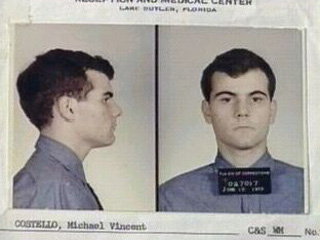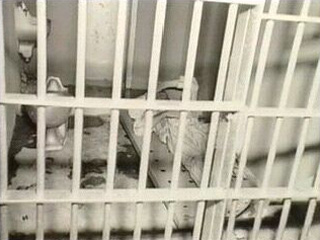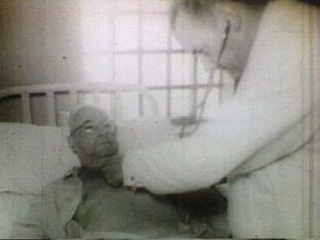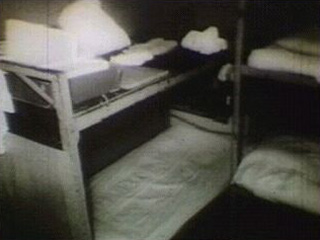>
1972
INMATE POPULATION JUNE 30, 1972: 10,102
Governor Reuben Askew divides Florida State Prison. The Union County site becomes Union Correctional Institution and the Bradford County site remains Florida State Prison.
The Department opens the first two of what will eventually be ten Probation and Restitution Centers (PRC's): one in Tampa and one in Miami. The court sentences offenders to these facilities for community supervision for an average of about four months. They live in the Center, work in the community and earn money to pay restitution to their victims. Officers at the PRC's assist the offender with finding a job, getting substance abuse or other counseling and getting an education. The PRC's are phased out beginning in 2000, with only four remaining today. They service about 80 offenders per year, and are contracted out.
For the first time in recorded Department of Corrections history, Secretary Louie L. Wainwright actually closes the Reception and Medical Center (RMC) in Lake Butler to incoming inmates because of prison overcrowding. As one might expect, the counties are unhappy with this turn of events because inmates are piling up in the county jails. Several employees remember that some counties were threatening to tie/cuff inmates to the institutional perimeter fence near the receiving area at RMC if the Department continued to refuse the intake of inmates; however, this was only threatened and, in fact, never happened.
RMC TEMPORARILY CLOSES
The Reception & Medical Center (RMC) established in 1968 at Lake Butler, Florida, is the first of Florida's three institutions with the primary mission of serving as a reception center. (A reception center's purpose is to provide orientation and medical, academic and custody classification for new inmates. After this orientation process, they are assigned to their permanent institution.) From early on, there is a problem with overcrowding at RMC because the Department as a whole is unable to keep pace with the housing needs of the number of inmates streaming through the prison system. Inmates going to RMC remain there for extended periods of time since there is insufficient bed space throughout the Department for their transfer. Inmates, who would normally be expected to remain at RMC from four to six weeks, stay on some occasions for as long as a year. In fact, many expire their sentences from there before they can be transferred to their permanent institution.
Grady M. Pauley, who retired as Superintendent (Warden) of Tomoka C.I. in 1998, was there. He recalls, "When we opened RMC on September 1, 1968, the design capacity was around 700. We started taking inmates on September 23, 1968, with the first receipt being inmate number 022146 from Levy County. Because of the great influx of inmates from the county jails, RMC exceeded the design capacity of the institution in February 1969 (within less than six months of opening) and was in pretty much of a crisis situation from that date on."
Louie L. Wainwright, retired Secretary of the Department, said that he closed RMC to incoming inmates three times in total.
Pauley, known for keeping meticulous records, remembers, "RMC was closed three times as stated by Mr. Wainwright. As I remember, each closure was for about 30 days. The dates were January 18, 1972; February 8, 1973 and September 26, 1974. The 1973 period was from February 8, 1973 until March 5, 1973. On that date of closure, RMC's count was 1,305 and the end-of-day inmate count for the entire Department of Corrections was 10,660. When we (temporarily) closed the institution in 1973, RMC's count was about double its original design capacity; i.e., there were two inmates everywhere one should have been."
In 2023, there are four reception centers statewide for men and one for women. They are Northwest Florida Reception Center, Reception and Medical Center (Lake Butler), Central Florida Reception Center and South Florida Reception Center. The reception center for women is called Florida Women’s Reception Center at Lowell. Youthful Offenders and death row inmates are processed in one day and then are sent to the appropriate facility.
Click here to listen to Secretary Wainwright discuss closing RMC.

Reception centers receive and process new prisoners.
Inmate Michael V. Costello files the now famous Costello vs. Wainwright lawsuit which addresses issues of overcrowding, sanitation, food and health care in prisons. It would be 21 years before the case is settled. Costello remains in prison with a life sentence.

Michael V. Costello
 Click here to hear Secretary Wainwright discuss how the Costello lawsuit began.
Click here to hear Secretary Wainwright discuss how the Costello lawsuit began.
 Click here to hear Secretary Wainwright discuss advantages and disadvantages of the Costello case.
Click here to hear Secretary Wainwright discuss advantages and disadvantages of the Costello case.
Another landmark case, Furman vs. Georgia, is decided by the U.S. Supreme Court in June 1972. The court holds that capital punishment is unconstitutional and strikes down state death penalty laws nationwide. As a result, the death sentences of 95 men and one woman on Florida's Death Row are commuted to life in prison. However, after the Furman decision, Florida revises the death penalty statutes in case the court reinstates it in the future.

Costello vs. Wainwright addressed sanitation issues, among others.

Poor health care was also an issue in the Costello case.

In some cases, cells contained as many as six beds.

Cells were typically very crowded.
- 1821-1845
- 1868-1876
- 1877-1895
- 1900-1919
- 1921
- 1922-1924
- 1927
- 1928-1931
- 1932 | CHAPMAN
- 1933-1935
- 1936-1939
- 1940-1945
- 1946-1949
- 1950-1955
- 1956-1961
- 1962 | WAINWRIGHT
- 1963-1965
- 1966-1969
- 1970-1975
- 1976-1979
- 1980-1986
- 1987 | DUGGER
- 1988-1990
- 1991 | SINGLETARY
- 1992-1995
- 1996-1998
- 1999 | MOORE
- 2000-2002
- 2003 | CROSBY
- 2004-2005
- 2006 | MCDONOUGH
- 2007
- 2008 | MCNEIL
- 2009-2010
- 2011 | BUSS
- 2011 | TUCKER
- 2012 | CREWS
- 2013-2014
- 2014 | JONES
- 2015-2018
- 2019 | INCH
- 2020-2021
- 2021 | DIXON
- 2022-Today
- Population Summary Table

